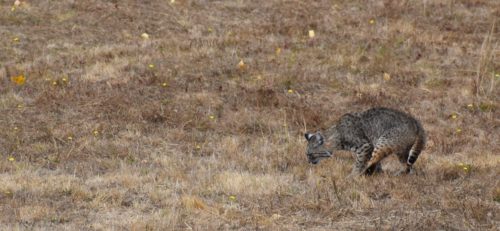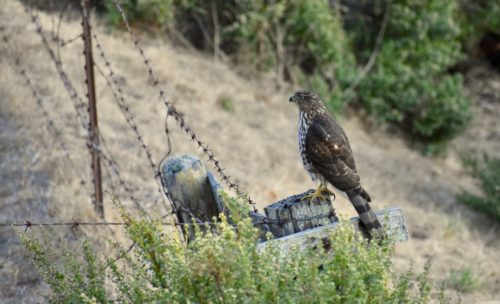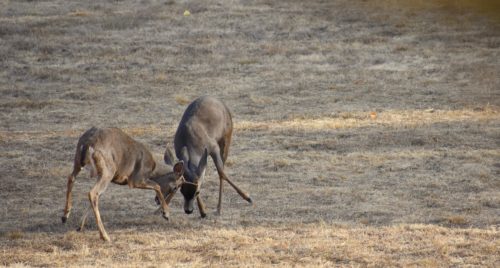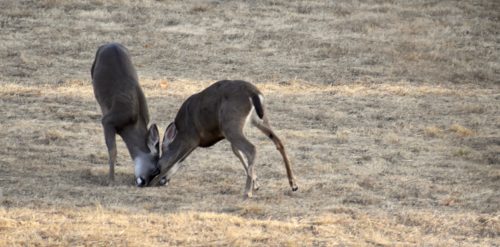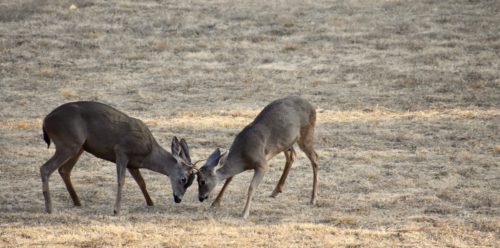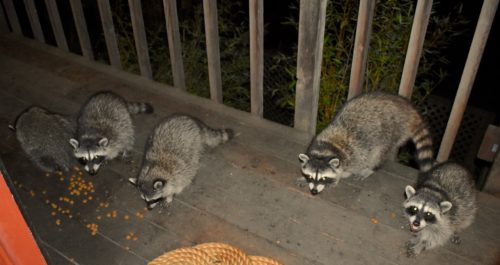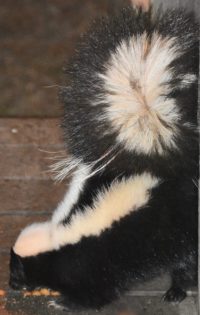This week we’ll look animals, both domestic and wild, in the eye to get a sense of what they see.
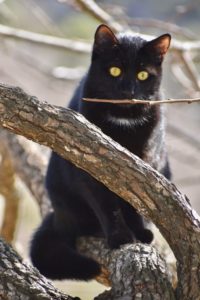
Newy, the stray cat we’ve taken in and who has been mentioned here before, can have an intense gaze when she’s looking off at something. It’s noticeable enough that it prompted me to look into, so to speak, the eyes of not only cats but other animals as well. A cat’s vision is not as all-powerful as it appears. A cat is most sensitive to blues and yellows and does not see colors like red, orange, or brown.
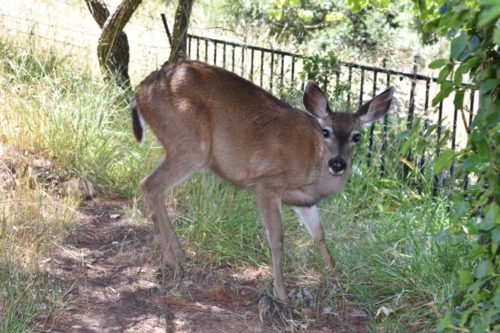
A blacktail doe looks up from grazing outside our bedroom window. The pupils in a deer’s eyes are horizontal, not round, and a flash camera makes them look blue.
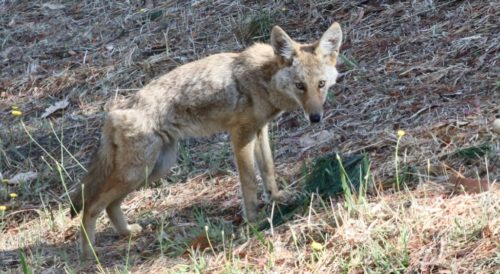
A coyote displays his predatory nature as he stares into a field. As it happens, just now as I type this, coyotes are howling outside Mitchell cabin. (Photo by neighbor Dan Huntsman)
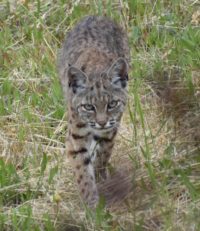
The no-nonsense look of a bobcat in the field below Mitchell cabin.
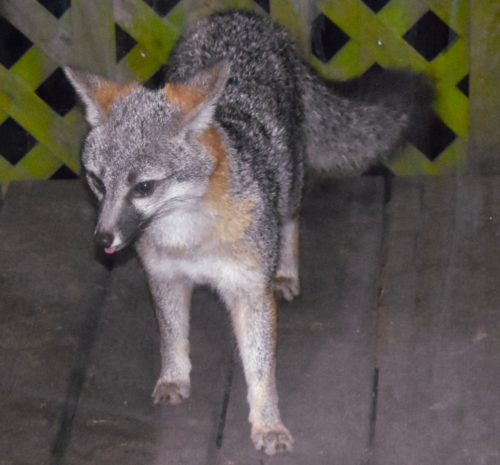
Foxes too are predatory, but their gaze makes them appear more curious than vicious.
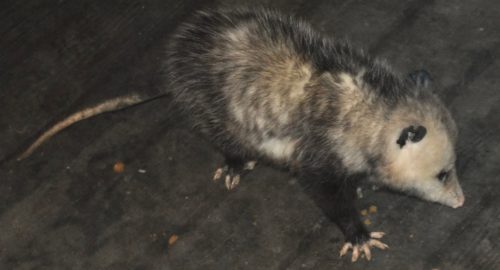
Possums have good night vision but don’t distinguish between colors very well. Overall, their vision is so weak they must depend on smell and touch to find food.
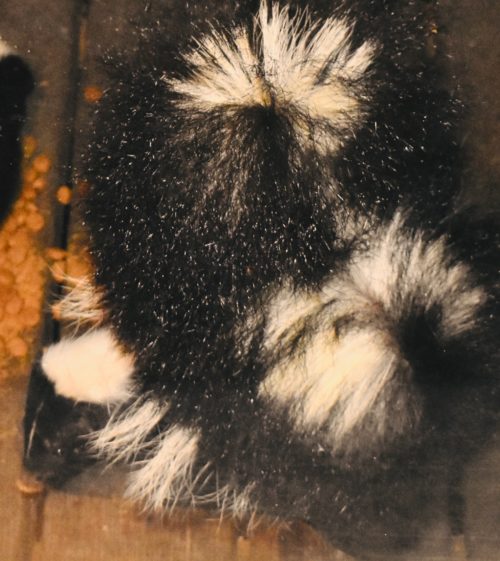
Skunks, like possums, have very poor vision and navigate largely via their senses of smell and hearing.
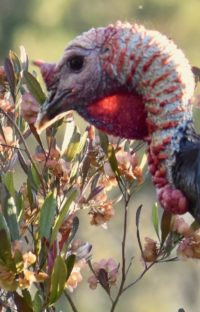
Wild turkeys, on the other hand, see in color and “have an excellent daytime vision that is three times better than a human’s eyesight and covers 270 degrees,” according to ‘Facts about Wild Turkeys.’ “They have poor vision at night, however, and generally become warier as it grows darker.”
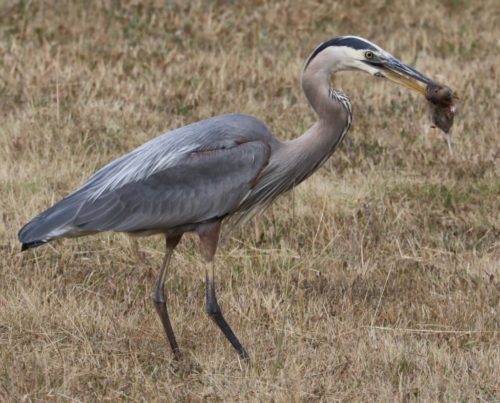
‘Livingbird Magazine’ reports that “Great Blue Herons can hunt day and night thanks to a high percentage of rod-type photoreceptors in their eyes that improve their night vision.” Near Mitchell cabin, a gopher with the baleful stare of death hangs from the heron’s beak.
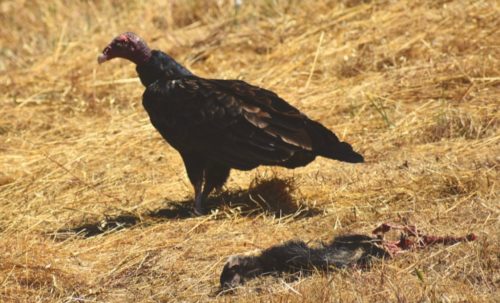
Buzzards have such “keen eyesight,” Seaworld claims, that “it is believed they are able to spot a three-foot carcass from four miles away on the open plains.”
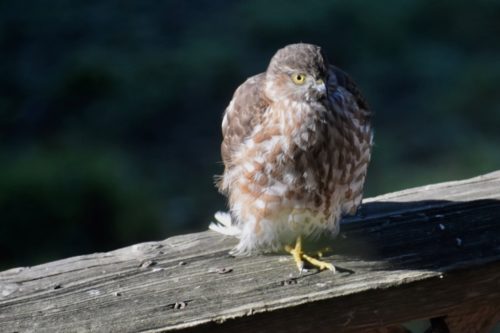
A stern stare. Coopers Hawks are skillful hunters and like other hawks have excellent vision.

The smirk of a Western Fence Lizard (also known as a Blue Belly for obvious reasons). It’s one of the most common lizards around Mitchell cabin. As for their vision, most lizards have excellent eyesight, and some can see into the UV spectrum.
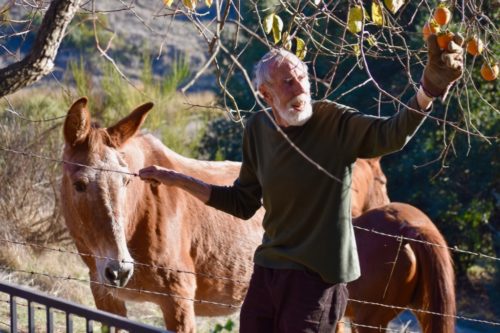
Somehow my work glove hand ended up on the persimmon, and my bare hand on the barbed-wire fence. (Photo by Lynn Axelrod Mitchell)
This moment became a test of my vision and not in looking at the persimmons growing between the fields of Mitchell cabin and Arabian Horse Adventures. After some staring, I concluded that the Arabian waiting patiently for a persimmon is, in fact, a female mule. Nonetheless, I eventually gave her some fruit. Later I found out the mule had arrived in the pasture not long ago after its owner died. So far I’ve never seen any of the stable’s trail riders on it. Arabian Mule Adventures.

